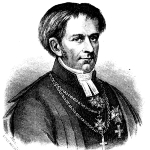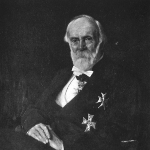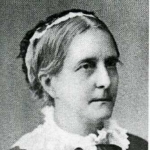Background
Carl Adolph Agardh was born on January 23, 1785, in Bastad, Sweden to Jurgen Agardh and Agneta Christina Ollman.

Karl Adolf Agardh, 1785-1859
Karl Adolf Agardh, 1785-1859
Grave of Carl Adolph Agardh in Lund.





Botanist mycologist politician priest pteridologist
Carl Adolph Agardh was born on January 23, 1785, in Bastad, Sweden to Jurgen Agardh and Agneta Christina Ollman.
In many ways Carl Agardh reflects the philosophic romanticism that flourished when he was a professor at the University of Lund (1812-1835).
In Sweden, where Linnaeus had been active until 1778, as well as abroad, knowledge of algae and their classification was still rudimentary at the beginning of the nineteenth century. Linnaeus had divided the algae known to him into three families (Fucus, Ulva, Conferva), and after his death botanists continued to incorporate new forms into the same groups. In 1807 he was appointed teacher of mathematics at Lund University, in 1812 appointed professor of botany and natural sciences, and was elected a member of the Royal Swedish Academy of Sciences in 1817, and of the Swedish Academy in 1831.
In 1812 the French botanist Lamouroux took an important step toward a more comprehensive and natural differentiation, especially among the red algae, but a new understanding of the relationships existing within the larger groups of algae was first presented in Agardh’s Synopsis algarum Scandinaviae (1817). Although it dealt basically with only one limited regional flora, the introduction presented an entirely new systematic survey of everything then considered algae.
Agardh’s broad outline became the Species algarum (1821-1828), which was never finished, and the more concentrated Systema algarum (1824), which summarized the stale of algology at that time with precise groupings and clearly defined descriptions. In these works, with a collection of illustrations, he presented theories that are still considered nodal points in the development of algology. He achieved eminence partly through fieldwork, but he acquired a thorough knowledge of the literature and an extensive knowledge of various collections (among others, the herbaria of algae in Paris, which he examined in 1820-1821). It was not until 1827 that he undertook an extensive field trip to the north shore of the Adriatic Sea, where he became familiar with the little- known algal flora.
Carl first published his views on this subject in several articles in French, and then in a more extensive form in Larobok i bolanik (1830-1832), which was translated into German and dedicated to Schelling. The general tenor of the manual, and in particular the importance that Agardh attributes to chemistry, led to a violent disagreement with his friend Berzelius. Their animated correspondence on this subject reveals a strong contrast between a romantic, speculative temperament and an empirical one.

Although Agardh is remembered mainly as an algologist, he represents several of the main trends in botany at that time. He took an active part in contemporary discussions of the natural system of plant classification. Agardh presented his outline of the plant kingdom in his Aphorismi botanici, in the form of sixteen academic dissertations (1817-1826), and Classes plantarum (1825), in which he characterized several new plant families, some of which are still considered valid.
His achievements were greatly recognized by the scientific community of asweden and Agardh was elected a member of the Royal Swedish Academy of Sciences in 1817 and of the Swedish Academy in 1831.
( )
( )
( )
( )
In his religious denomination Agardh was an Evangelical Lutheran, and in 1835 was offered the bishopric of the Karlstad diocese in western Sweden, which he accepted, and thereupon gave up writing on botany.
Agardh believed that attention must be focused on the individual species and genera, which step by step, and with great care, might be arranged in larger groupings whose mutual relationships could be established only by further research. But in his pica for caution he expounded the Romantic Naturphilosophie. Nature is freedom; therefore it does not obey human logic, but its own logic, which cannot be penetrated by reason. Thus, no deductive, logically functioning system of classification can conform to the laws of nature. Agardh’s romanticism was even more pronounced in his writings on plant anatomy and plant physiology.
His opinions reflect the views of nature developed by German Romantic Naturphilosophen: Schelling, Oken, and Nees von Esenbeck. Agardh, however, opposed the deductive, speculative method of the Romantics. He insisted that all study of nature had to be approached inductively, that it is not possible to establish a few groups within which all species can be classified.
Agardh had divided personal aims and was often quite disturbed. He found himself increasingly at odds with his academic surroundings. He was, however, politically active, made important contributions to economics, and participated in pedagogical and theological debates.
Carl Adolph Agardh was married to Margareta Charlotta Lindschoug with whom he had five children. He was the father of Jacob Georg Agardh, also a botanist.

Jacob Georg Agardh was the son of Carl Adolph Agardh, and from 1854 until 1879 was professor of botany at Lund University.


On his way home from the Adriatic he stopped at the mineral springs of Karlsbad, where he met the Romantic philosopher Schelling. Together they studied algal forms in the hot springs, and Agardh demonstrated their life cycle. He later called his visit to Karlsbad “the most interesting days of my life”; it is evident that his interests here shifted from taxonomy to the problems of plant life.
